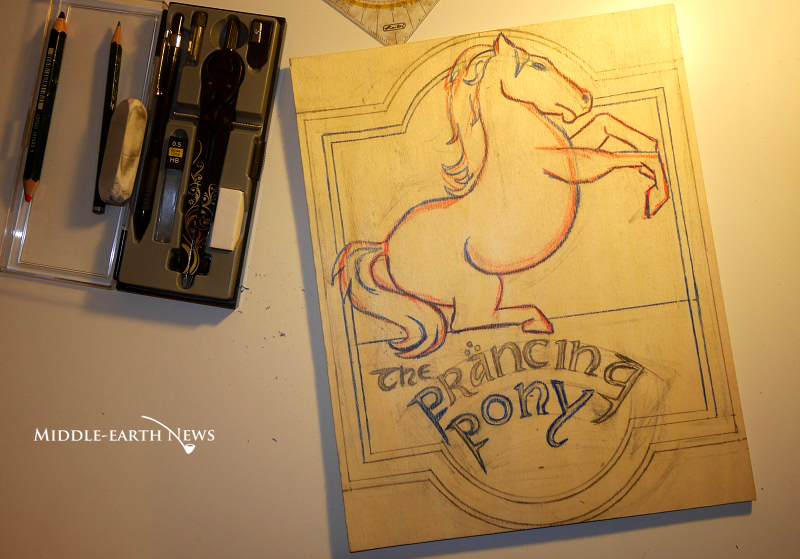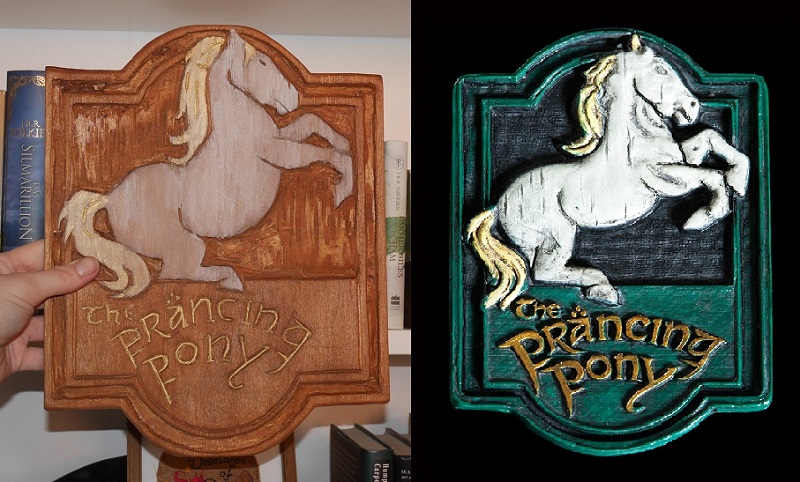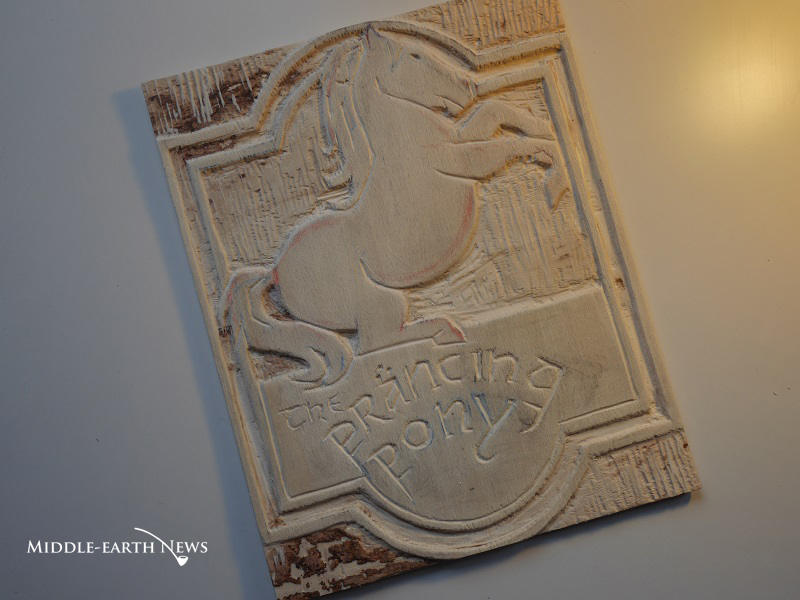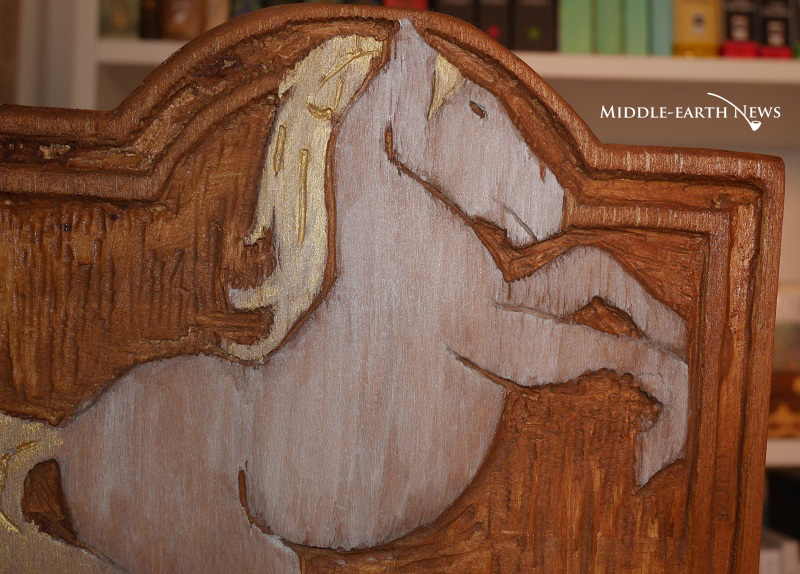I don’t know why, but I’ve always wanted to own a replica of the Prancing Pony sign, preferably a Weta Workshop collectible. I really like the idea to have a wall on my kitchen with various Inn signs from Middle-earth. Just take a moment to close your eyes. Can you picture a wall with a Green Dragon sign, next to an Ivy Bush sign, accompanied by a Prancing Pony sign? If there is one type of collectible still unfulfilled by Weta, then it it is this Inn sign collectible series.
For years I’ve been waiting for Weta Workshop to start selling Prancing Pony signs that are not magnets, but to no avail. Over the years, the longer I waited, the more grew my desire to create one myself. Last weekend, I’ve finally sat down and created my very own Weta Workshop -inspired Prancing Pony sign.

I know this is not easy to re-create, but I’ve documented my process nonetheless. Maybe there are people out there who find this helpful and inspiring.
DISCAIMER: This DIY is not suitable for minors!
Weta Workshop Inspired Prancing Pony Sign DIY.
Materials needed: A plywood board, woodcutting tools, wood stain, acrylic paint, clear varnish (or Mod Podge at the very least), a pencil, sand paper. A saw to cut the sign into shape is optional and I’d only recommend this to people already with experience.
First step: Sketch the design.
For my Prancing Pony sign, I used Weta Workshop’s design as an inspiration and guideline. You can, of course come up with your very own design. I wasn’t too concerned with a 100% accuracy so there are some minor differences as you can see in this comparison with my finished sign and the official Weta sign.


The main reason for these differences are my woodcutting skills. I’m by no means an expert in it. I’ve experimented with woodcutting in art school, but I’ve received no formal training whatsoever in woodcutting nor the processing of wood in general. I know from the start that I’d have trouble with the lettering. So instead of facing outward, my letters are cut into the wood. Also, my sign lacks the rich details the Weta sign has. As for the paint job, I’ll go down below more into detail as to why mine looks so very different. Personally, I’m over the moon with my result, despite the lack of detail and changes.
Step Two: Carving.
This step is the physically toughest and longest for obvious reasons. The carving alone took me a full day. Early on, I’ve realized that my choice of plywood was not the best. I just went to my nearest arts & crafts store and picked a random wooden board which ended up being very low quality. The issue with my wooden board was that it chipped too easy which was a real issue when I tried to work on details. In general, birch, pine or poplar plywood is recommended for woodcutting.

Now, if you’ve never worked with cutting tools before there is a very good in-depth tutorial in this link. Although it is a woodcutting tutorial, the tips and explanations on how to carve are applicable to what we’re doing . One key tip I can give you already is to always carve away from your body and to have all your limbs behind the cutting tool. You can and you will slip and the last thing you want is to ram the sharp cutting tool into your flesh. Trust, I’ve been down that idiotic road and it is not fun.
Optional Step: Cutting off excess wood
For this step, I’ve had the help of my dad, a hobby carpenter. He has created various-sized wooden furniture items in his life so he is very familiar with the saw. If you don’t have access to someone with a saw, feel free to ignore this step. There is no real necessity for this step, unless you already have the tools and experience.
Step Three: Sanding & Painting
After you’re satisfying with your carving process, you’ll need to sand everything down. After that comes the fun part – painting!
Again, and this is the fun part about a DIY, how you paint your sign is totally up to you. Personally, I decided to paint my differently to the one by Weta Workshop. For one, I wanted a simpler, more toned-down color scheme. Also, I wanted my Prancing Pony sign to look similar to my two other wooden Middle-earth DIYs, a wooden jewelry box and a miniature signpost. You can read more on those over here.


I’ve intentionally painted the pony with a thin, washed-out layer of white and gold to make it look weather-beaten. This weather-beaten look had the great advantage to make all my cutting mistakes seem as a sign of aging and not as a mistake done by the artist! After the paint was dry, I covered everything with several thin layers of clear varnish.
Viola, you’re done!
Again, I know this isn’t a simple paper mache DIY. Some of the materials are not easy to come by, nor are they inexpensive at times. I’ve either had all tools, with exception of the plywood board, myself or my dad had it. So for me, this DIY was very inexpensive.
Have you done any wooden Middle-earth DIYs? Leave us a comment down below so others can enjoy it!


